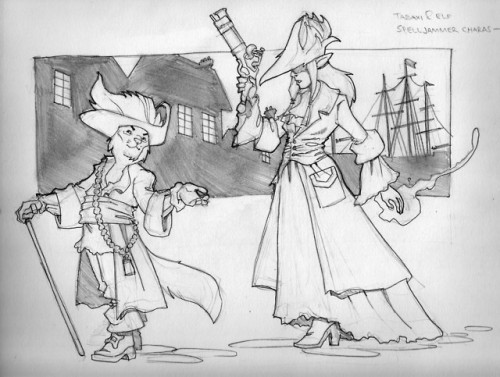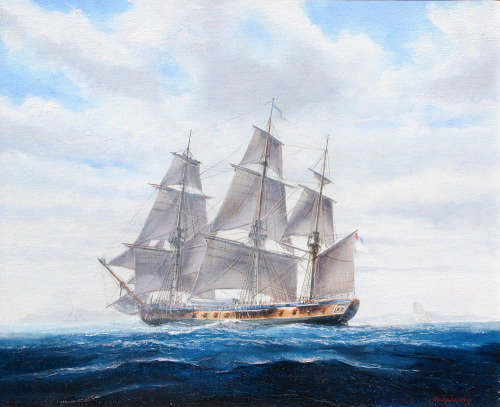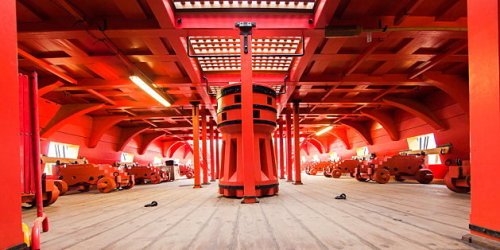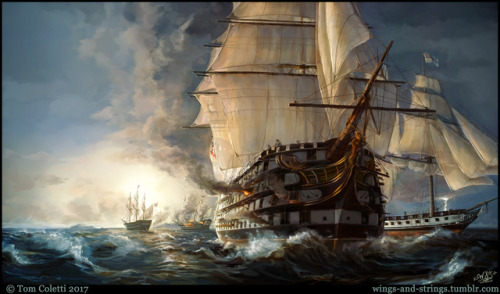#frigate


Hermione replica is a Concorde-class frigate ( a reproduction of the 1779 Hermione),France
L’Hermione 1779, by Paul Deacon (1953-)
The Hermione was a 12-pounder Concorde class frigate of the French Navy. She became famous when she ferried General Lafayette to the United States in 1780 for support to the Americans in the American Revolutionary War. She carried 32 guns, 26 12-pounder long guns, as well as 6 six-pounder long guns.
Post link

Again the topsails were hoisted and top-gallant sheets home. It was a strong breeze, although the water was smooth, and the Aurora dashed through at the rate of eight miles an hour, with her weather leeches lifting.
— Frederick Marryat, Mr. Midshipman Easy
“The quarter-master during ordinary watches conns the ship, and stands beside the wheel at the conn, unless close-hauled, when his station is at the weather side, where he can see the weather-leeches of the sails,” wrote Admiral William H. Smyth in his Sailor’s Word-Book.
Leeches are the borders or edges of sails, and those on the weather side are facing the wind (the opposite of lee).
The Blackwall Frigate ‘Yorkshire’, British School 19th century.

The sea broke over as we lay in the trough, deluging us with water from the forecastle, aft, to the binnacles; and very often, as the ship descended with a plunge, it was with such force that I really thought she would divide in half with the violence of the shock. Double breechings were rove on the guns, and they were further secured with tackles; and strong cleats nailed behind the trunnions; for we heeled over so much when we lurched, that the guns were wholly supported by the breechings and tackles, and had one of them broken loose, it must have burst right through the lee side of the ship, and she must have foundered.
— Frederick Marryat, Peter Simple
A frigate heeling in an offshore gale, Nicholas Pocock (1740-1821).

When the hands were turned up to muster, the number of killed amounted to nine, and wounded to thirteen. When this was made known, there seemed to be a general smile of congratulation at the number fallen, rather than of their regret for their loss. The vanity of the officers seemed tickled at the disproportionate slaughter in a frigate of our size, as compared to what they had heard the ships of the line had suffered.
— Frederick Marryat, The Naval Officer (Frank Mildmay)
Engagement between His Majesty’s Ship Amelia… and L’ Arethuse French Frigate… off the Isles of Loss, on the Coast of Africa… 7 February 1813, 1817 print.
‘Warring on Paper” (Commission)
If you’re wondering where I disappeared to in the last couple of weeks, I’ve been working on this painting commission between several wildfires. It depicts a fictitious naval battle in the early 1800s between the USS Ohio, HMS Prussianti, HMS Duke of Kent, and La Vestale. The Duke of Kent and the Prussianti–listed as an unnamed 160-gun ship of the line–were drafted by the British navy but never built, so for this painting I had the interesting task of studying both the drawings and other contemporary ships of the line to flesh out their details. The client was especially helpful in providing the plans, models, diagrams, and other historical information to help this painting take shape.
As of 12/19/17 I am still currently closed for commissions so that I can work through my queue, so follow or check back often to find out when I will reopen for a new commission batch! Critters, portraits, machines & more will be available.
More info available at wings-and-strings.tumblr.com/commissions;
Inquiries can be sent to [email protected]
–Wings & Strings
Post link






